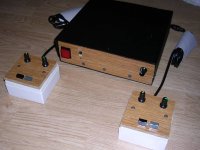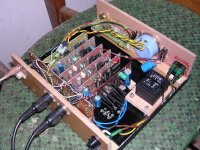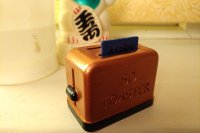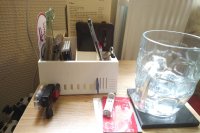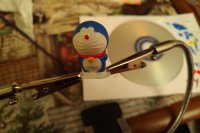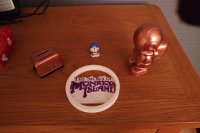Another Pong problem or the non-filtering of interferences.
So last time I finished making PCBs and power supply unit. It was quite hard to make a generator, especially as it starts from 1MHz with my poor PCB technology but finally I got it. All readings on scope were OK, TV started to react to signals and take its blue screen out, so I decided to build a ball board.
The board worked from the first time. I connected voltage inputs to pots and moved ball on screen. After fitting proper capacitors (trial and error), ball started to have the same width as height.
Similarly everything went OK with paddles - they were and, after putting a few more trimmers around main potentiometers, they started to appear where they should. After messing with capacitors they even got the same dimensions. Doesn't matter that I calculated ca. 4.5-4.7nF on both and got best results with 3nF on the left and 3.3nF on the right

.
When I switched TV from 5" to 10" one, I found a problem: There were interferences on vertical sync. Picture slightly waving up and down. This would look terrible on a large screen, so I started to trace it.
In this design, vertical sync pulses are taken from mains transformer, it is regulated with Zener and then goes to flipflop. After flipflop it's negated and a pulse is stretched with RC. There was no problem in this circuit - when I disconnected mains transformer input and fed 50Hz from generator interferences went away. But as voltages from transformer reached Zener diode, everything started to wave.
So I decided to minimize interferences by placing capacitor after flipflop. I quickly found that this gives no effect and I should look for culprit around NAND which sums sync signals to composite. The "waving" effect would be then caused by sync having interferences on composite, but NOT having them when it goes to e.g. drive ball/paddle generators.
So the first thought: Take the vertical sync signal which goes to mixing, capacitor, ground. And I got the strangest possible effect: Everything works perfectly until I go about one meter away from the device - waving comes back. Because target enclosure will be made mostly of metal, I think that the "effective good-operating range" will decrease

. So, not this way.
After insulating and making sensitive tracks not running in parallel, after trying to filter out different interferences with different capacitors with no effect, I finally decided to do something totally opposite: Do not filter the interferences out, but make the device run with consistent interferences in all signals. So HSync going to mixer, 33pF capacitor output of Zener diode.
Works perfectly.
Another problem: These transistors. They behave... strange. I took them from some old printer driver with CM-class CPU, with power supply made using germanium technology. I understand that there are two silicon NPN transistors with the same markings in the same packages having totally different pinouts, but they were probably made for switching applications only. Their voltage characteristics vary so much that I had to replace them a few times as they had too narrow amplification characteristics.


